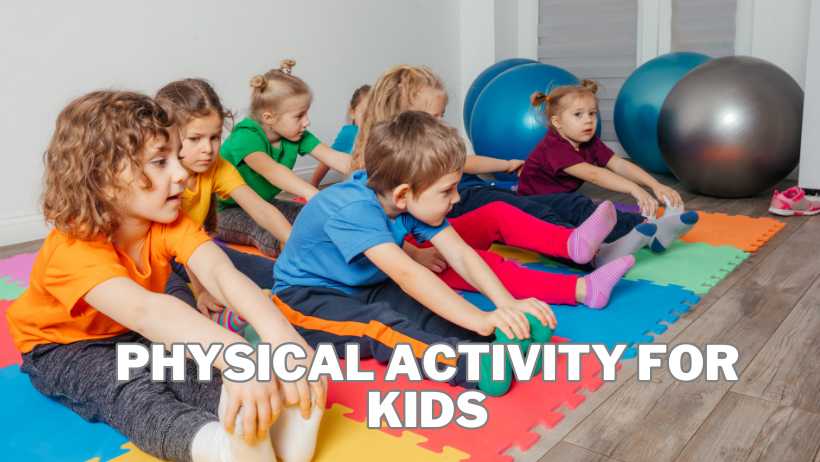
Discover the benefits of physical activity for children’s health and development. Learn how to create a supportive environment and be a positive role model.
Engaging in physical activity is not only beneficial for children’s overall health but also plays a vital role in their development. By encouraging kids to be active, we can improve their cardiovascular health, enhance their motor skills and coordination, and reduce the risk of chronic diseases.
Creating a supportive environment that promotes regular exercise is key, and as parents, we can lead by example. By limiting screen time, exploring alternative activities, and incorporating physical activity into our daily routines, we can help our children develop a love for movement.A Guide to Positive Parenting: Nurturing Child Development
Involving the whole family in physical activities not only strengthens our bonds but also allows our little ones to see us as active role models. Prioritizing physical activity and setting a positive example is crucial for us as parents in fostering an active lifestyle in our children.
Encouraging Physical Activity in Children: Promoting Health and Development
As a parent, one of the most important things you can do for your child’s overall health and development is to encourage physical activity. Physical activity has numerous benefits for children, ranging from improving cardiovascular health to developing motor skills and coordination. By creating a supportive environment and setting a positive example, you can help your child develop a love for exercise that will last a lifetime.
Creating a Supportive Environment
Creating a supportive environment that promotes and supports regular exercise is crucial in encouraging physical activity in children. By providing opportunities for physical activity and making it a priority in your family’s daily routine, you can help your child develop healthy habits that will benefit them throughout their lives. Consider incorporating the following strategies into your family’s lifestyle:The Importance of Balancing Autonomy and Safety in Empowering Child Independence
- Be a Role Model: Set a positive example by being active yourself. Children are more likely to engage in physical activity if they see their parents enjoying it. Find activities that you enjoy and include your child in them, whether it’s going for a walk, playing a sport, or dancing around the living room.
- Limit Screen Time: With the prevalence of screens in today’s society, it’s important to limit the amount of time your child spends in front of screens. Set clear boundaries and encourage alternative activities, such as playing outside, reading a book, or engaging in imaginative play. By reducing sedentary behaviors, you can help your child develop a more active lifestyle.
- Incorporate Physical Activity into Daily Routines: Look for opportunities throughout the day to incorporate physical activity into your child’s routine. Encourage active transportation, such as walking or biking to school, and involve the whole family in physical activities, such as hiking, swimming, or playing a game of soccer. By making physical activity a regular part of your child’s day, it becomes a natural and enjoyable habit.
The Importance of Variety
Encouraging a variety of physical activities is essential in helping children find something they enjoy and are more likely to continue doing. Every child is unique, with different interests and abilities, so it’s important to provide a range of options for them to explore.
Some children may prefer team sports, while others may enjoy individual activities such as swimming or dancing. By exposing your child to a variety of activities, you can help them discover their passions and find joy in being active.
Additionally, encouraging a variety of activities helps prevent burnout and reduces the risk of overuse injuries. By offering different options, your child can engage in different movements and develop a diverse set of skills. This not only enhances their physical abilities but also fosters their overall development and self-confidence.
The Power of Family Physical Activities
Engaging in family physical activities not only strengthens family bonds but also allows children to see their parents as active role models. By participating in physical activities together, you create shared experiences and quality time. This can be as simple as going for a hike, playing a game of tag in the backyard, or taking a family bike ride.
When children see their parents prioritizing physical activity and having fun while doing it, they are more likely to develop a positive attitude towards exercise. It also provides an opportunity for parents to teach their children important skills, such as teamwork, sportsmanship, and perseverance, in a supportive and nurturing environment.
The Role of Parents in Promoting an Active Lifestyle
As a parent, you play a crucial role in promoting an active lifestyle in your child. By prioritizing physical activity and setting a positive example, you inspire your child to make healthy choices and develop lifelong habits. Here are a few key strategies to keep in mind:Understanding the Crucial Role of Nutrition in Child Development
- Set Realistic Goals: Begin by setting realistic goals for your family’s physical activity. Start with small steps and gradually increase the duration and intensity of the activities. Celebrate achievements along the way and make it a positive and enjoyable experience for your child.
- Provide Encouragement and Support: Offer words of encouragement and support to your child as they engage in physical activity. Recognize their efforts and celebrate their progress. Encourage them to try new activities and explore their interests.
- Make It Fun: Physical activity should be fun and enjoyable for your child. Incorporate games, challenges, and rewards to make it engaging. Use your creativity to make exercise an adventure that your child looks forward to.
- Celebrate Achievements: Celebrate your child’s achievements and milestones in physical activity. Whether it’s learning a new skill, completing a fitness challenge, or participating in a sporting event, acknowledge their efforts and express pride in their accomplishments. This positive reinforcement will motivate them to continue being active.
In conclusion, encouraging physical activity in children is crucial for their overall health and development. By creating a supportive environment, offering a variety of activities, engaging in family physical activities, and setting a positive example, you can inspire your child to embrace an active lifestyle.
Remember, your involvement and support as a parent play a significant role in shaping your child’s lifelong habits. So lace up your sneakers, get moving, and embark on this exciting journey of promoting physical activity in your child.


















